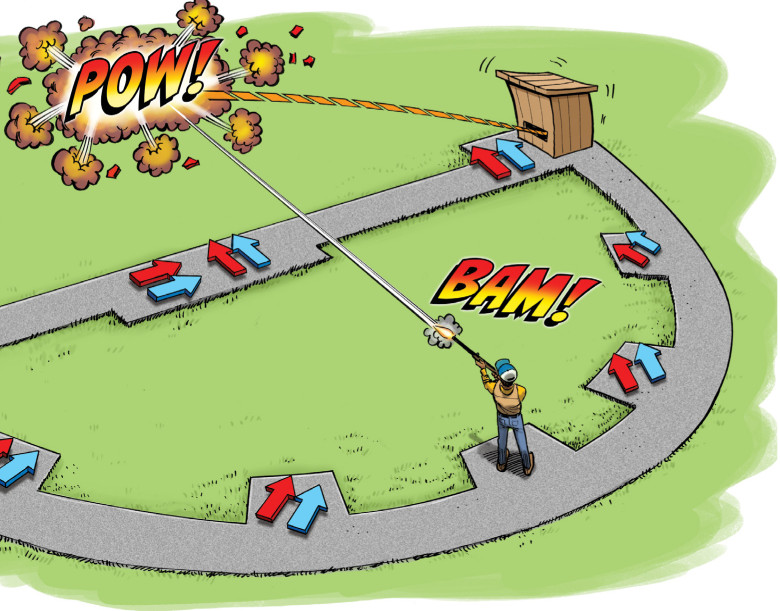Skeet Stance Dance


Skeet shooting has been an exciting recent addition to the League’s clay target shooting sports offerings. It provides a much difference experience than other shooting disciplines, and can be quite the challenge to athletes that are just picking up the sport. One of the biggest differences that skeet has is that, unlike like other sports, each post has targets coming from radically different directions relative to the athlete. This requires athletes to change their stance regularly in anticipation of the direction the targets will travel for each shot.
HISTORY OF SKEET SHOOTING
Originally created in 1923 by Charles Davis and William Harden Foster of Andover, Massachusetts, the modern sport of skeet shooting evolved from a game originally called “shooting around the clock.” The field was set up like a clock face with a single trap thrower set at the 12-o’clock position with targets being thrown in a variety of directions. This became a challenge to shoot safely around spectators and neighboring homes, so Foster had the idea to cut the field in half and set a second trap at the 6-o’clock position. Just like that, the game of “skeet shooting” was born.

SKEET STANCE STATIONS 1 AND 7
Stations 1 and 7 give the athlete a straightaway presentation with targets that fly towards or away from the athlete. In addition, the targets can either be rising or descending. In this situation it’s common for the athlete to align their body with their shoulders square facing the trap house opposite of them. Feet should be shoulder-width apart and the athlete should be leaning slightly forward with their nose over their toes.
STATIONS 2 THROUGH 6
One of the key aspects in skeet shooting, and why it’s often compared to bird hunting, is that targets are presented in a crossing pattern relative to the athlete. High targets thrown over the left shoulder and low targets from the right challenge the athlete to use a full range of motion. Your stance at each station should allow for you to track, lead, and follow- through each target. For stations 2 through 6, a general rule is to align yourself so that your belly button is pointed at the low house (for left-handed shooters, point yourself at the high house). It’s best to break your targets within 5 yards of either side of station 8—that’s the “window” where you’ll have the best range of motion.
STATION 8
Station 8 hosts two of the most unique and exciting shots in all of clay target sports. Station 8 places the athlete just inside of the low trap and high trap houses in the center of the field. The first target is launched from the low house over the left shoulder of the athlete while the second target is launched from the high house over the right shoulder. These targets are very challenging because they appear to be coming at you! Your stance for station 8 high house should be pointed outward towards the center stake. As this target is coming from high over your shoulder, this position will allow you to have enough time to pick up your target and break it without having to swing too much. For the low house, point your feet almost directly at the house. This will allow you to swing the shotgun in a motion to quickly pick up and break the target. Left-handed athletes should do much the same, just in reverse.

BALANCE
Balance is a very important part of skeet shooting due to the challenging angles and range of motion. Additionally, multiple stations will throw the high and low targets simultaneously, so making sure your balance is correct will ensure that you can handle two quick shots. As athletes will need to change the direction of their swing to handle multiple targets in succession, the majority of your weight should be on the foot closest to the center station. You should also keep your shoulders slightly forward past your toes. This focuses your center of gravity and allows you to have a smoother, more controlled swing to your target. This will also allow you to get your head down on the stock and see the targets clearly. While stance and balance are key to getting good scores in skeet shooting, remember that the most important part is to be safe and have fun.
